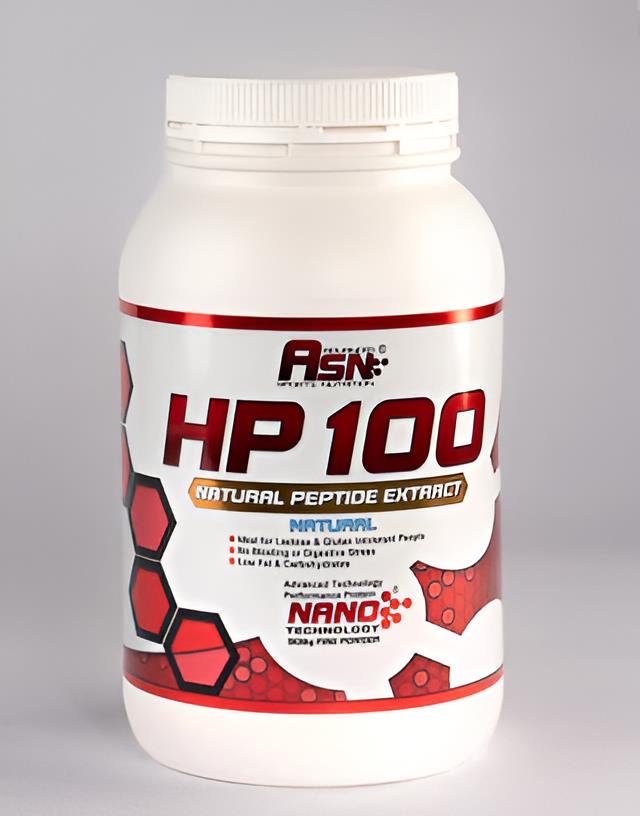Hydrolysed protein is a type of protein that has been broken down into smaller peptides, allowing your body to absorb and utilise it more efficiently. At ASN Advanced Sports Nutrition, we believe in helping you understand the science behind nutrition so you can make informed decisions about your health and fitness goals.
Table of Contents
- Key Takeaways
- What is Hydrolysed Protein?
- The Process of Making Hydrolysed Protein
- Types of Hydrolysed Protein
- Benefits of Hydrolysed Protein
- Potential Side Effects and Considerations
- Conclusion
- FAQs:
Key Takeaways
- Faster absorption of amino acids for quick muscle recovery.
- Supports muscle growth by enhancing protein synthesis.
- Gentler on the stomach, reducing bloating and digestive issues.
- Increased bioavailability for more effective muscle support.
- Boosts immune health, supporting overall wellness.
What is Hydrolysed Protein?
Hydrolysed protein refers to a protein that has undergone hydrolysis. This process breaks down the protein into smaller peptides or amino acid chains, making it easier for the body to absorb and utilise. Essentially, hydrolysed protein is a “pre-digested” protein, allowing for faster absorption in the body compared to intact protein sources.
Hydrolysed protein is commonly used in sports supplements, meal replacements, protein powders, and recovery drinks due to its fast absorption and efficient delivery of amino acids. Hydrolysed protein can be derived from various protein sources, including whey, casein, soy, egg, and beef.
The Process of Making Hydrolysed Protein
The creation of hydrolysed protein involves a scientific process called hydrolysis. Hydrolysis is a chemical reaction that uses water to break the bonds between molecules. In the case of protein, the bonds that link amino acids together are broken using water, and sometimes acids or enzymes, to form shorter chains of amino acids, known as peptides. This process can be performed in a controlled environment using enzymes, heat, or a combination of both.
- Starting with Protein Source: Hydrolysed protein begins with a base protein source such as whey, soy, or egg. These proteins are typically high-quality, complete proteins that provide all essential amino acids.
- Hydrolysis: The protein is then subjected to hydrolysis, where the protein molecules are broken down into smaller fragments. Enzymes like proteases are often used in this process to cleave the peptide bonds between the amino acids. This produces smaller peptides and free amino acids that are easier for the body to digest and absorb.
- Purification and Filtration: After hydrolysis, the protein solution is usually filtered to remove any unwanted byproducts or residual enzymes, leaving behind the hydrolysed protein in its purified form.
- Drying and Powdering: Finally, the hydrolysed protein may be dried into a powder form, making it suitable for incorporation into protein powders, various vitamins and supplements.
Types of Hydrolysed Protein
There are various types of hydrolysed protein, depending on the original protein source used and the extent of hydrolysis. Some common types include:
- Hydrolysed Whey Protein: Derived from milk, whey protein is one of the most popular protein supplements. Hydrolysed whey protein is processed for faster absorption and is often used for muscle recovery after exercise.
- Hydrolysed Casein Protein: Also derived from milk, casein protein is known for its slower digestion rate. Hydrolysed casein protein is broken down into smaller peptides, making it easier to digest, though still slower than whey protein.
- Hydrolysed Soy Protein: A plant-based alternative to whey and casein, soy protein is often used in vegan and vegetarian protein supplements. Hydrolysed soy protein is easier to digest compared to whole soy protein.
- Hydrolysed Egg White Protein: Derived from egg whites, this protein source is known for its high-quality amino acid profile and high digestibility after hydrolysis.
- Hydrolysed Beef Protein: Hydrolysed beef protein is derived from beef and is often found in protein powders and supplements designed for those who want a non-dairy protein source.
Benefits of Hydrolysed Protein
Hydrolysed protein offers several key benefits, especially for athletes, fitness enthusiasts, and people with specific nutritional needs. Below are some of the primary benefits:
1. Faster Absorption and Digestion
One of the most significant advantages of hydrolysed protein is its rapid digestion and absorption rate. Because the protein is already broken down into smaller peptides and amino acids, the body does not need to spend extra time breaking down the larger protein molecules. This makes hydrolysed protein particularly useful post-workout when the body needs quick access to amino acids for muscle recovery and growth.
2. Improved Muscle Recovery
The amino acids derived from hydrolysed protein are crucial for repairing muscle fibres that break down during exercise. Since hydrolysed protein is absorbed more quickly than other protein sources, it can help accelerate muscle recovery, reducing the chances of delayed onset muscle soreness (DOMS). This can be especially beneficial for athletes and bodybuilders who engage in intense training regimens.
3. Easier on the Digestive System
Some individuals may have difficulty digesting whole proteins, especially those with sensitive stomachs or digestive issues. Hydrolysed proteins are broken down into smaller, more manageable components, which can make them easier to digest and absorb. This can be advantageous for people who experience bloating, gas, or discomfort when consuming regular protein sources.
4. Enhanced Immune System Support
Certain types of hydrolysed protein, particularly those derived from whey, have been shown to contain bioactive peptides that may help boost the immune system. These peptides can enhance the body’s immune response, helping to fight off infections and promote overall health.
5. Reduced Risk of Allergic Reactions
Hydrolysed proteins are typically easier for the body to process, and they may also be less likely to cause allergic reactions in some individuals. The hydrolysis process breaks down certain allergenic proteins, which could make it safer for people who have sensitivities to specific protein sources, such as dairy or soy.
6. Weight Management
Some research suggests that hydrolysed protein may help with weight management. By promoting satiety and reducing hunger, hydrolysed protein could help reduce overall calorie intake. It may also preserve lean muscle mass during weight loss, as it provides the essential amino acids required to maintain muscle tissue.
Potential Side Effects and Considerations
While hydrolysed protein offers many benefits, it is essential to consider individual factors when incorporating it into a diet. Some people may experience mild gastrointestinal issues like bloating or stomach cramps, especially if consuming large amounts. Additionally, hydrolysed protein supplements should be used in moderation, as excessive protein intake can strain the kidneys and lead to other health issues over time.
Conclusion
If you’re looking for a protein supplement that offers fast digestion, quicker muscle recovery, and high bioavailability, hydrolysed protein might be your best bet. ASN Advanced Sports Nutrition provides premium hydrolysed protein options that are scientifically formulated for athletes, fitness enthusiasts, and anyone looking to optimise their protein intake. Get in touch with ASN Advanced Sports Nutrition today and discover how our products can help you achieve your fitness goals.
FAQs:
What makes hydrolysed protein different from other proteins?
Hydrolysed protein is broken down into smaller peptides, making it faster to digest and absorb compared to other protein forms.
Is hydrolysed protein easier to digest?
Yes, because it’s already partially broken down, it’s gentler on the digestive system and easier to absorb.
Can hydrolysed protein help with muscle recovery?
Its rapid absorption helps your muscles recover faster by delivering amino acids more quickly after intense workouts.
Is hydrolysed protein suitable for people with lactose intolerance?
Yes, as it is typically a form of whey or other protein sources that undergo further processing to reduce lactose content, it may be easier for those with lactose sensitivity to tolerate.
How do I incorporate hydrolysed protein into my diet?
You can add hydrolysed protein powder to smoothies, shakes, or mix it with water after your workouts for optimal muscle recovery

